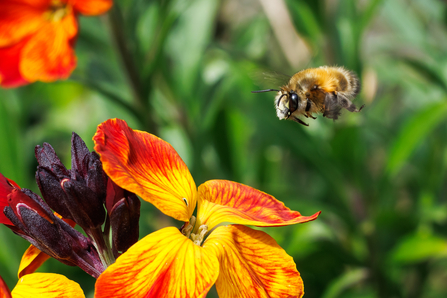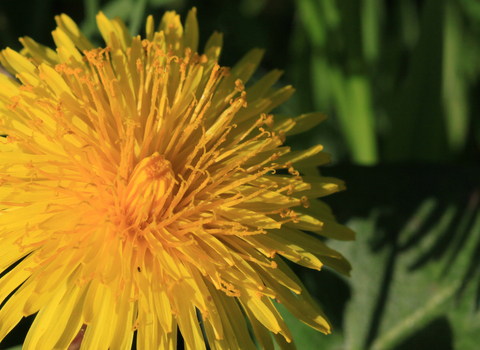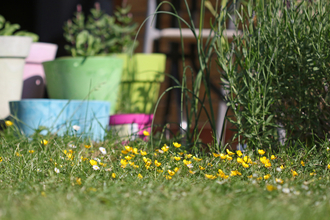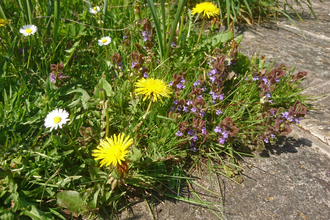
Hairy-footed flower bee by Jill Orme
What better way to bask in the spring sun than with a spot of wildlife gardening! Now is a great time to prepare for pollinators on your patch, by sowing seeds in pots and borders.
Bees and butterflies feed on nectar. To support these insects for as long as possible, it’s important to choose species that will flower at different times in the year. Early flowering plants, like primrose and honesty, are vital when other nectar sources are scarce.
Plus, by introducing more wildflowers, your garden will burst with colour and life every year!
Read our top tips on how to attract different insects to your garden.

Lawn with flowers growing by Wendy Carter
Let it grow!
With spring offering more favourable growing conditions for our gardens, lawns start to shoot up. These long and luscious grasses provide great habitats for wildlife, with reptiles, amphibians, small mammals and insects using long grass for shelter. Familiar wildflowers, such as dandelions, do more than just provide carpets of sunny colour; they also provide food and pollen for bees and butterflies.
So, before you grab the mower, can you embrace some wilder patches for wildlife?
That’s not to say that short lawns have no value; shorter grass allows birds, such as blackbirds, to pick at earthworms in the soil. Why not let your borders go wild and cut a short path in the middle? Balance is key!
Learn more on creating a wild patch in your garden and the value of longer lawns for wildlife below.







